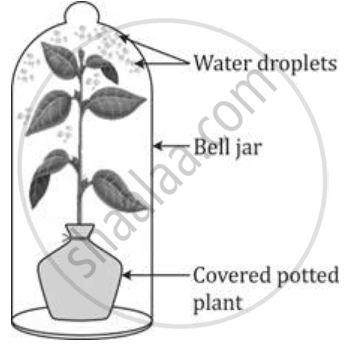Advertisements
Advertisements
प्रश्न
The process of evaporative loss of water from the aerial parts of a plant is ______.
पर्याय
Ascent of sap
Translocation
Transpiration
Exudation
उत्तर
The process of evaporative loss of water from the aerial parts of a plant is transpiration.
Explanation:
Transpiration is the loss of water in the form of vapour from the aerial regions of a plant through the stomata, lenticel and cuticle.
संबंधित प्रश्न
What causes the opening and closing of guard cells of stomata during transpiration?
How does transpiration help in the uptake of water from the soil?
Why is there a need for a transport system in plants and animals?
(a) State whether the following statement are True or False.
(b) Rewrite the false statement in the correct form by changing either the first or the last word only.
Most transpiration occurs at midnight.
Give suitable explanation for the following:
Cork and bark of trees help in preventing loss of water
An apparatus as shown below was set up to investigate a physiological process in plants. The setup was kept in sunlight for two hours. Droplets of water were then seen inside the bell jar. Answer the questions that follow:

Mention two ways in which this process is beneficial to plants.
Identify the wrong statement and correct it.
Leaves perform the function of transpiration only.
Why is transpiration called a necessary evil?
Observe the diagram and answer the following;
 (i) |
 (ii) |
- Are these types of guard cells found in monocots or dicots?
- Which of these shows a higher water content (i) or (ii)?
- Which element plays an important role in the opening and closing of stomata?
Observe the following diagram and identify the process and its significance from the following options:

